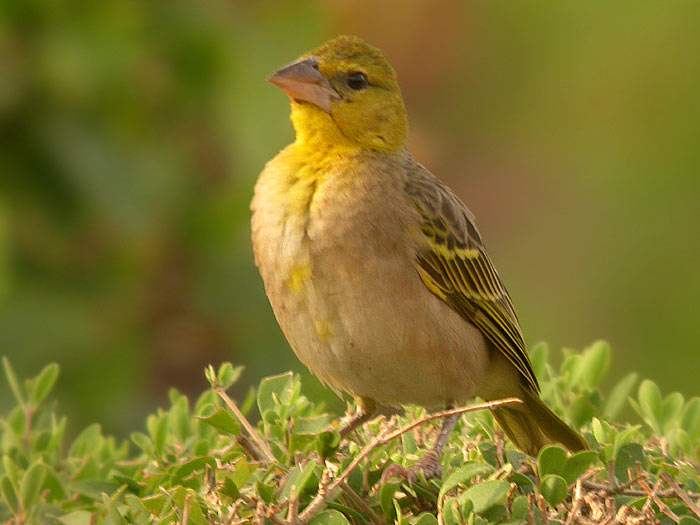- Village Weaver
Taxobox
name = Village Weaver
status = LC | status_system = IUCN3.1

image_width = 225px
image_caption = Female fromRéunion Island

image2_width = 225px
image2_caption = Male at Avifauna, Holland
regnum =Animal ia
phylum = Chordata
classis = Aves
ordo =Passeriformes
familia =Ploceidae
genus = "Ploceus "
species = "P. cucullatus"
binomial = "Ploceus cucullatus"
binomial_authority = (Müller, 1766)The Village Weaver ("Ploceus cucullatus") is a resident breeding
bird species in much of sub-SaharanAfrica , and has been introduced toHispaniola .This very abundant species occurs in a wide range of open habitats, including open woodlands and human habitation, and frequently forms large noisy colonies in towns, villages and hotel grounds.
This weaver builds a large coarsely woven nest made of grass and leaf strips with a downward facing entrance which is suspended from a branch in a tree. 2-3 eggs are laid. This is a colonial breeder, so many nests may hang from one tree.
The Village Weaver is a stocky 15-17cm bird with a strong conical bill. The breeding male has a black head and bill and chestnut nape. The upperparts and wings are yellow and black, and the underparts are yellow.
The non-breeding male has a yellow head with an olive crown, grey upperparts and whitish underparts. The wings remain yellow and black.
The adult female has streaked olive upperparts, yellow and black wings, and pale yellow underparts. Young birds are like the female but browner on the back.
Village Weaver feeds principally on seeds and grain, and can be a crop pest, but it will readily take insects, especially when feeding young, which partially redresses the damage to agriculture.
The calls of this bird include harsh buzzes and chattering.
References
* Database entry includes justification for why this species is of least concern
* "Birds of The Gambia" by Barlow, Wacher and Disley, ISBN 1-873403-32-1
Wikimedia Foundation. 2010.
